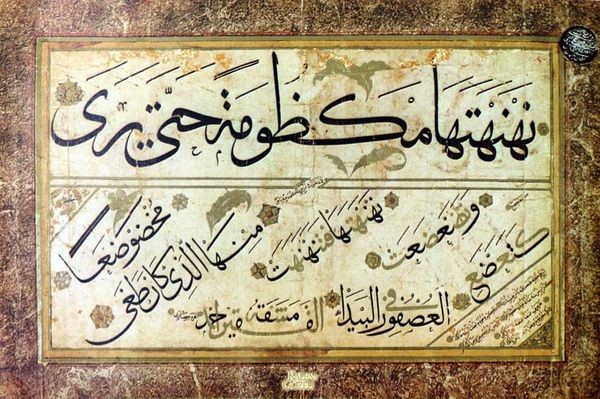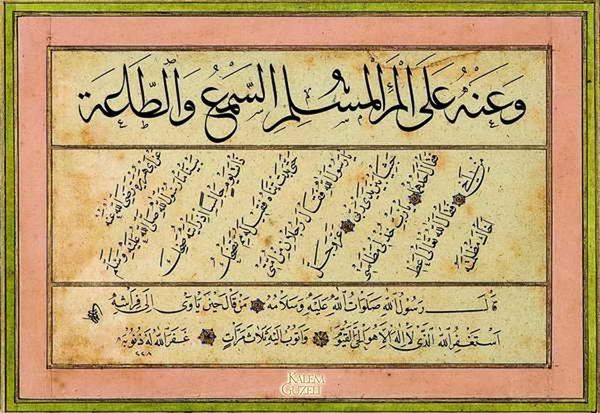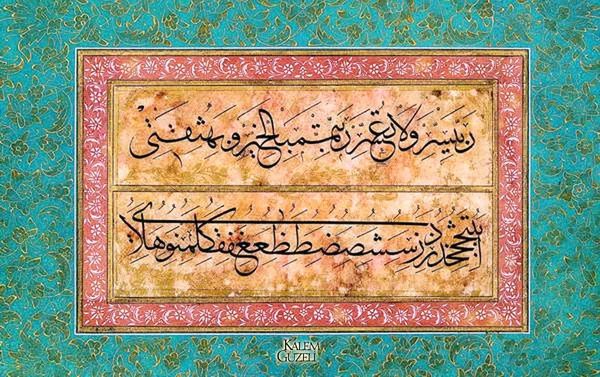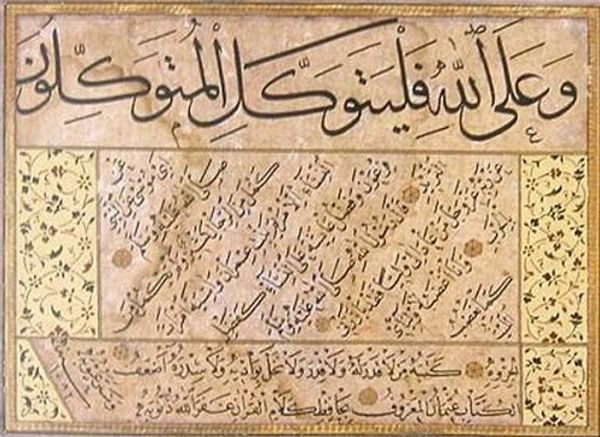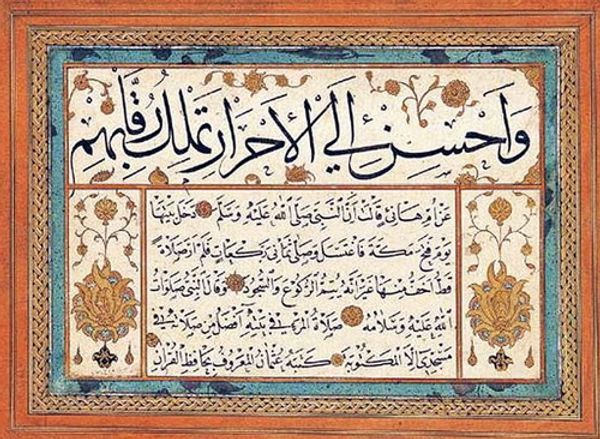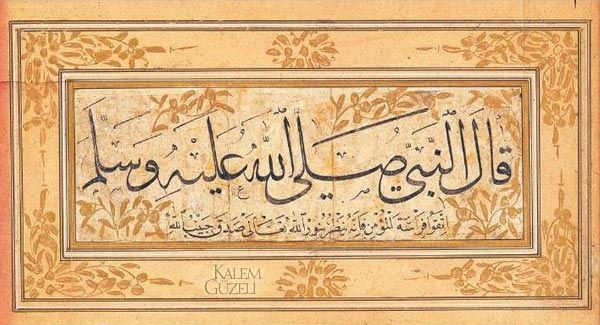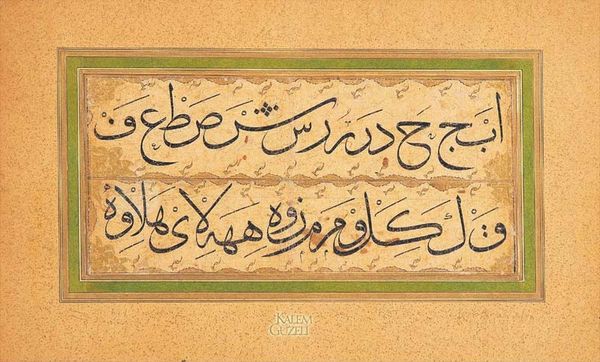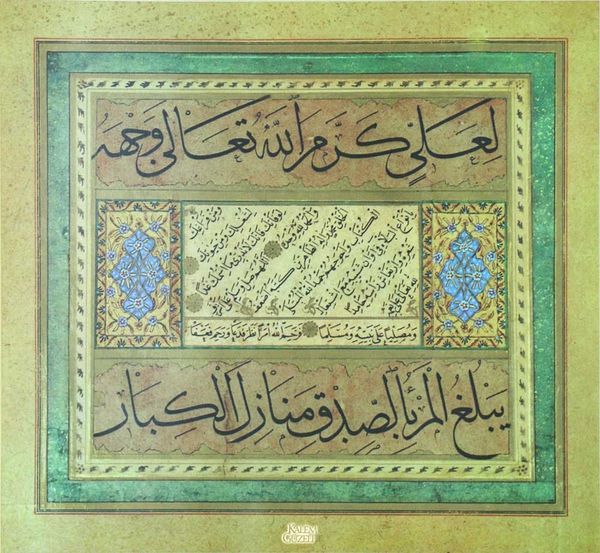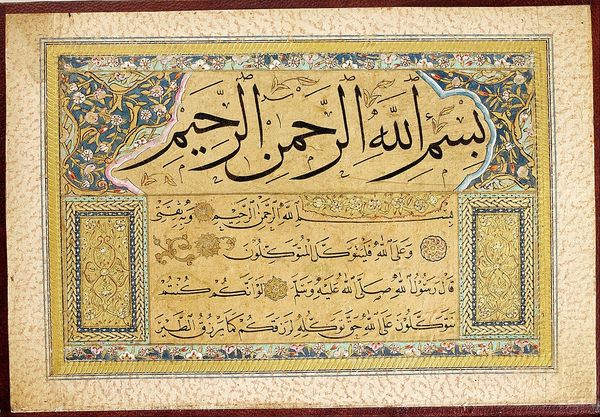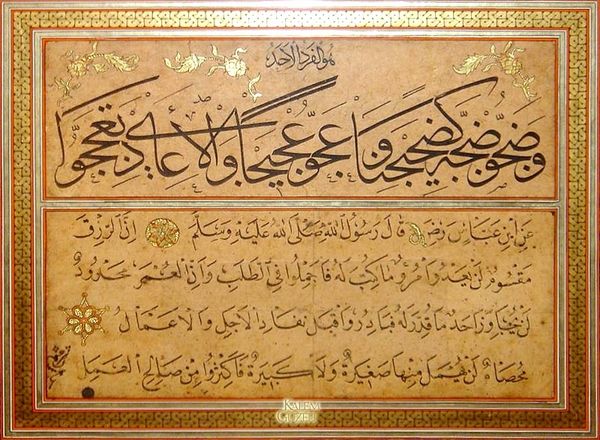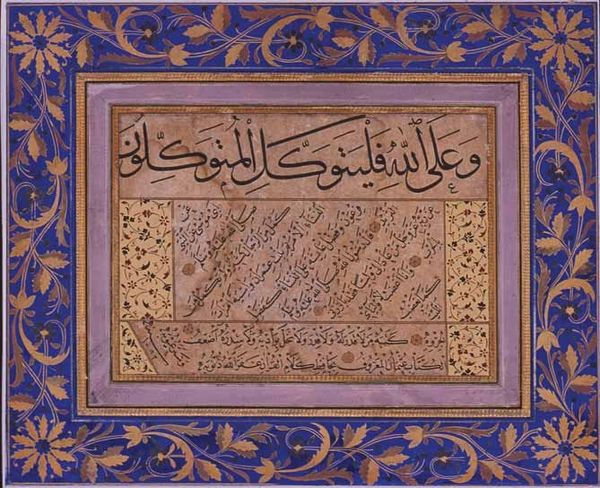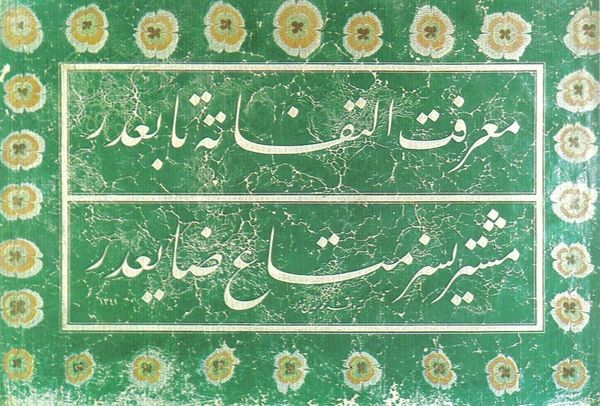
drawing, mixed-media, paper, ink
#
drawing
#
mixed-media
#
water colours
#
paper
#
text
#
ink
#
islamic-art
#
mixed media
#
miniature
#
watercolor
#
calligraphy
Copyright: Public domain
Curator: Looking at this artwork, a mixed-media piece attributed to Sheikh Hamdullah titled "Kıta", the immediate impression is one of intense skill. What are your initial thoughts? Editor: The materials strike me first. The texture of the paper itself seems crucial; it’s not just a passive surface, but an active element. And those precise, deliberate strokes of ink forming the calligraphy contrast beautifully with the softer washes of watercolour, which must require specific application and a profound awareness of surface absorption. Curator: Indeed. Hamdullah was a prominent calligrapher in the Ottoman Empire. This piece demonstrates not just technical mastery, but also the high social and artistic status of calligraphy at the time. The materials themselves were incredibly precious, influencing the value and importance of the artwork. Editor: Absolutely. The making itself signifies labor, knowledge, and even control—think about the paper's origin, likely handmade. The ink would be carefully prepared, and the mixing of colours also showcases precise technique. These weren't casual gestures, but meticulous choices embedded within social practice and cultural symbolism. Is there insight you can give us on the artistic landscape around the piece? Curator: The prevalence of calligraphy within Islamic art tells us much about how this work circulated in Ottoman society. Calligraphy served multiple functions: decorative, religious, and political. Examining pieces like these teaches us about power structures, intellectual movements, and cultural values embedded within aesthetic expression. What do you make of the artwork in terms of consumption? Editor: Well, I consider how pieces such as these blur supposed "boundaries" between art and craft, because ultimately they all serve social roles in consumption. Whether adorning a wall or existing inside a book, "Kıta" was also intended for consumption - for viewers to appreciate it with the human senses. We’ve come to appreciate Hamdullah and his choices of materials through its preservation. Curator: A poignant observation on the layered meanings embedded in such a deceptively simple, though skillfully executed piece. The importance of art in its social, political, and aesthetic context. Editor: Precisely! And considering it as a thing laboriously assembled, of meticulously handled materials. The dual-perspective gives us a comprehensive understanding, doesn't it?
Comments
No comments
Be the first to comment and join the conversation on the ultimate creative platform.
